Leoš Janáček's 'Sinfonietta' Sounds Like Teen Spirit
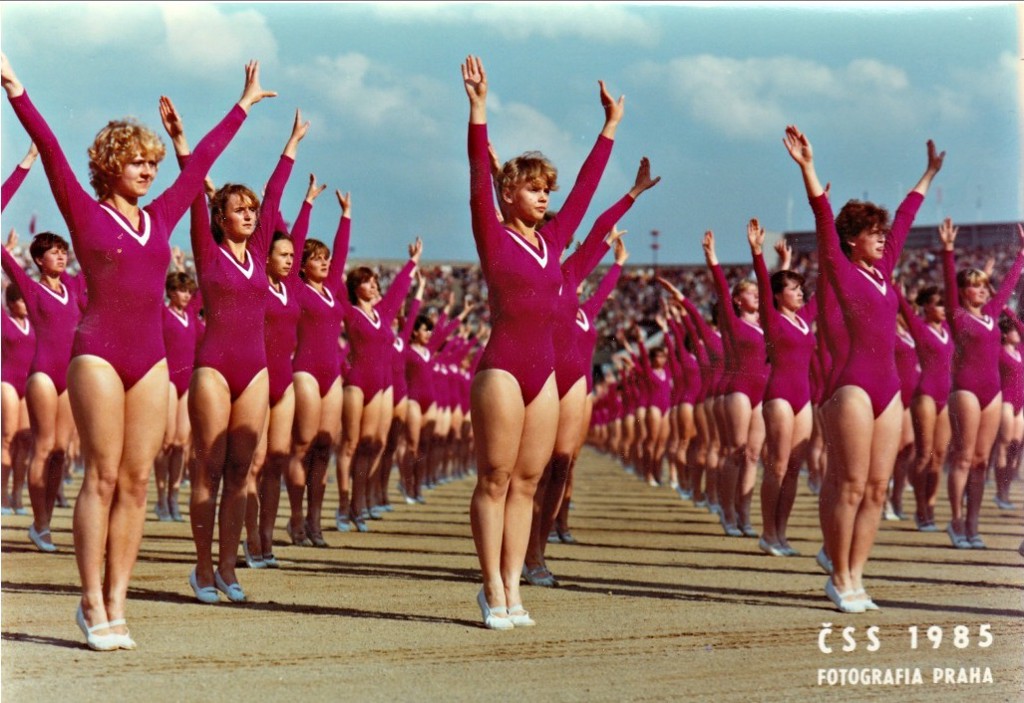
I was lucky enough to be back on my college campus last week where I got the chance to visit my old orchestra director who I haven’t seen since graduating from college. It was a nice opportunity to a) be outside at my alma mater and wonder things like, should I go to grad school, and b) see an academic figure with whom I wasn’t particularly close but always respected and admired and c) say, “playing Pétrouchka was a very hard and bad time for me,” and for him to be like “okay and?”, and d) ask for some recommendations for this column!
The recommendation came up in a discussion of our old friend Antonín Dvořák, because my college orchestra played Symphony From The New World within the past few years. (“Without me??” I screamed.) I asked him if it was basic to think it’s the best symphony of all time, and the short answer was no. But upon hearing my love of Dvořák, my former director suggested I check out Janáček.
“Who the — ”
Leoš Janáček is another one of the more prominent Czech composers (oh, duh) after Dvořák and Smetana. His career trajectory is fairly similar to Dvořák’s as well: both men started out drawing on traditional folk music and melody, inspired by Czech history and heritage. But whereas Dvořák went and took time to go to America, Janáček instead stayed in then-Czechoslovakia where his style shifted and changed in on itself. He lived until 1928, and this week’s piece, his Sinfonietta, was written two years before his death, and greatly signifies the ways in which Romantic music became more expressionist and bizarre into the 20th century. (Think Pétrouchka, only less stressful.) It was originally composed for a “gymnastic festival,” a celebration of youth and sporting, and in turn, its sound is more militaristic than a lot of traditional symphonies.
But of course, as you start listening, you’ll realize that Sinfonietta is really not a traditional symphony at all. Its opening movement, Allegretto, begins with a fanfare of brass accompanied by timpani. It feels like a strong and athletic piece — immediately I don’t relate — but melodic as well. It’s a short burst of energy, very gymnastics-y, if you can remember the summer Olympics which were, jfc, LAST YEAR. The pride reflected in this first movement is less of a “I want to show the beauty of my country’s history and landscape,” like Smetana’s work, but rather “My country is strong.” “Our teens are athletic and lean,” we get it, Czechoslovakia.
Its second movement, the Andante, is unlike any Andante we’ve heard before. Previous Andantes have been: mournful, wistful, beautiful but in the sad way where you’re just looking at old photos. They’re not slow, but they’re often quieter. This, though. This Andante starts in a maniacal, almost mischievous way. This is someone’s theme song. It’s their “up to no good” anthem. I mean, truly, this is some Mario Brothers shit. It takes almost a full minute before the cellos (!!!!!! THERE THEY ARE) come in with the type of melody you’d be accustomed to in a slower movement. There’s no semblance of drifting into a sense of comfort in this piece; Janáček is always mixing things up and shifting focus from instrument to instrument. A write-up I read of it referred to it as “jump cuts,” which: I agree! It’s hyper-dramatic and stylized, especially in those final few seconds as it rushes to completion.
Its Moderato, as a matter of fact, has a much more traditional sound perhaps expected of a symphony’s second movement. Compared to the Andante, it’s thoughtful and paced out, not quite as scattershot. Its central theme is like breathing slowly in and out, centering oneself in the context of a larger picture, much like Janáček was doing with himself in Czech culture. Until, that is: 2:11 brings back a familiar sounding fanfare with a sense of foreboding. And then at 3:16, it returns to a whimsical melody played first in the brass and then the low strings. This particular movement feels especially cinematic to me, especially as it builds into the 4:19 (almost) mark. You get the sense that Janáček was really writing characters and protagonists and villains in his music, despite this not being a ballet or an opera or a tone poem, really, of any kind.
The next movement is another Allegretto, and like Sinfonietta’s first movement, this one also begins with a fanfare. I realized in listening to this piece that I haven’t written about many brass-heavy pieces. (“When will you write about Mahler?” ask 15–20 emails every day. “Never,” I promise.) It’s true, though, my tastes are often more inclined to discuss more percussive pieces or ones with particularly robust strings. This is more militaristic in nature than most of what I usually like, and yet, it’s so strange that I can’t help but love it. Playful and powerful in its sound. So self-assured in its expressiveness. Janáček doesn’t care if you’re keeping up; he’s beyond that.
The final movement is an Andante con moto, and begins with, of all instruments, the woodwinds. It ebbs and flows between them and the strings, like a gust of wind rustling branches on a not quite spring day. From there, it picks up into full thunderstorm. I’ll admit: this fifth movement really does remind me of Danse Macabre with its ominous undercurrent throughout. Last week’s Khachaturian had this kooky joy to it; there’s an intensity present in this Janáček piece I’ve not yet heard before. The word I can best think of is “brave.” It’s meant to represent bravery, sure, and the strength of the Czech people (doing, uh, teen gymnastics), but also for Janáček himself, whose career only grew throughout his life. This being one of his last and most prominent pieces speaks to his tenacity and determination: this is not the kind of piece a young composer writes! It requires depth and skill and age and wisdom. Its triumph — its big final note, a declaration — is a really “it’s done” if I’ve ever heard one.
Fran Hoepfner is a writer from Chicago. You can find a corresponding playlist for all of the pieces discussed in this column here.
An Open Letter
Netflix’s “Dear White People” is an invitation, not a wedge.
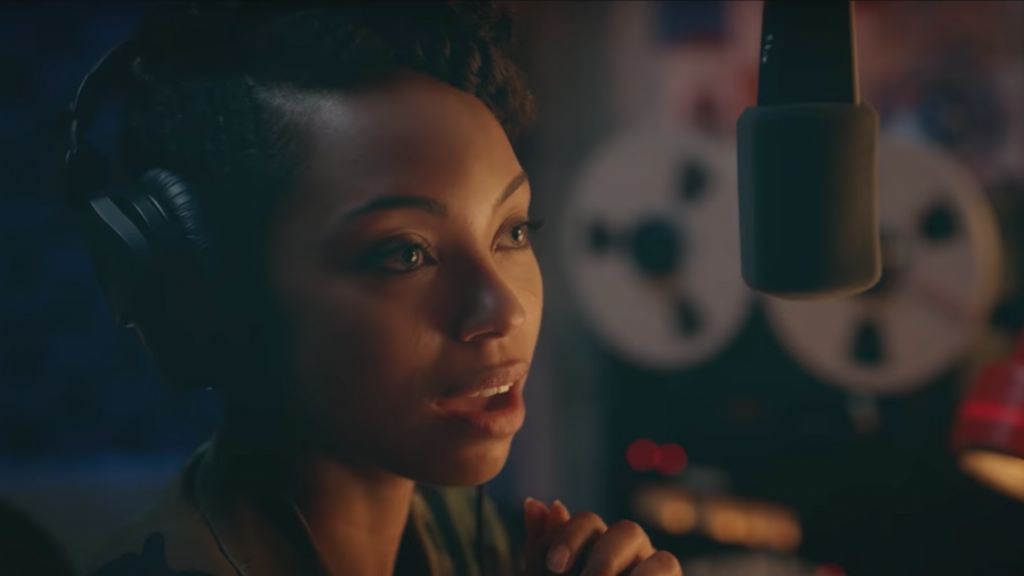
The Netflix series “Dear White People” gives its characters the benefit of the doubt. There’s an episode detailing the rise and fall of a friendship between two women, acknowledging that some of the ways people change can be negotiated, and sometimes others just can’t. There’s an episode detailing a young man’s gradual coming-out, and the impossibility of acknowledging which lines can’t be crossed. Another episode thoughtfully follows a white guy negotiating a black space. Another episode examines the trappings of the “model-minority” label. Each narrative is handled deftly, with a keen awareness of their characters’ interiority, and in any other scenario, that fact would prove wholly unremarkable, but in this case it means everything because the characters in question are black.
The series dropped on Netflix early last Friday morning, after a campaign that’s been growing since the original film’s Sundance premiere in 2014. The movie, directed by Justin Simien, followed Samantha White (played by Tessa Thompson), as Sam and her peers navigated the realities of being black in an institution that doesn’t have their wellbeing in mind. As undergraduates at Winchester University (a fictitious Ivy League doppelgänger), a number of characters represent college archetypes (the dean’s son, Troy Fairbanks; a gay journalist, Lionel Higgins; an aspiring socialite, Colandrea “Coco” Connors), and upon the film’s initial release the reception was mostly warm. But irrespective of their final verdicts, most critics mirrored Justin Chang’s summation that even if the movie “ultimately feels modestly edgy rather than shocking or dangerous, ‘Dear White People’ nonetheless provokes admiration for having bothered to ask some of the hard questions without pretending to know any of the answers.”
The series, in contrast, follows parallel plot lines — the biracial Samantha White (now Logan Browning) still leads the titular campus radio show “Dear White People”; the conflict’s catalyst is still a highly attended blackface party held on campus. But this time, the depth and attention given to each character’s development is significant. Over the course of ten episodes, their stories are extracted and examined, until we’re left not with stereotypes or typecasts or megaphones, but human beings, complete with autonomy and dignity. “Dear White People” might not be the only series to travel a similar route this year (to say nothing of Netflix alone in the past two months), but the big difference here is that rather than acting as decorative pieces or conjoined tangents, people of color are given center-stage to grow and develop and figure their shit out.
Literally Every Person Of Color Who Had A Speaking Role On “Girls”
And then there are the little things: the flourishing strings in episode four as Sam and Coco walk the university’s grounds for the first time; the renditions of Gabe’s worst-case fantasies, delivered in Godard-ian aplomb, as his relationship gets away from him a few episodes later. The series makes precise, articulate jabs at colorism, body-shaming, and race-baiting. Simien, who stayed on as the showrunner, knows his audience, and he tells them they’re worthy of being seen. These details support each narrative while insisting that everyone is worthy of self-transformation, no matter where they’re coming from. That how you’re seen and who you are can sometimes feel like wide, unnavigable chasms. When a semi-closeted Lionel apologizes to an out bartender for his stumbling awkwardness, the bartender smiles and sighs and tells him to calm down, because “I used to be you.” And when a character notes, moments before an incident with the police, that he’s “smart as shit,” it is promptly followed by another character wondering, “Who cares if you’re woke or not, if you’re dead?”

Even binge-watching the show, you can’t help but marvel at how every major character is individually, and separately, allowed to breathe. The show’s structure allows for that wiggle room, but it makes Simien’s project no less of a feat: he’s created a non-farcical show about young black folks in an academic setting, and no one is dancing, or drumming, and there isn’t a single sports venue present. While the American viewership at large may be perennially obsessed with a very specific conception of black friendship, the scope of their imagination is paltry at best. As Brit Bennett, author of The Mothers, told the Times, “writing about ordinary black people is extraordinary. It’s absolutely its own form of advocacy.”
There’s life as it’s actually lived, and then there are our lives as screenwriters perceive them. “Dear White People” cradles a self-awareness of the rift between the two. Reggie, a tech-savvy character who later finds himself on the other end of a cop’s gun, notes that black people usually aren’t given a wealth of options; we get “cheap urban drama, or tragedy porn… and when they do accidentally give us a quality movie, they think that gives them a license to double down on that shit” (and in a winking sweep, that notion is compounded by Ikumi, the characters’ self-described “catch-all Asian friend”: “Yeah, it must really suck to only have two movies this month with people that look like you; try having the same two options since 2000 — all I got is The Joy Luck Club and Crouching Tiger”).
All the same, a lot of folks aren’t down with that sort of progress. Citing the series’ title alone, without having even watched five minutes of the very first episode, a campaign matriculated calling for a boycott of Netflix over the series. Immediately after the campaign surfaced, Simien noted that the pushback gave him some pause, but in an essay titled “Why did I name it “Dear White People?”, he wrote:
It’s not just that the suggestion of being lumped into a monolithic group is a new experience for some people, it’s the audacity of a black sissy daring to look them in the eye and say “I see you. From the fear in your belly to your rusted armor of anger, I see you. Because despite many institutional efforts to dissuade me I have found a way to see me, and thus see fit to place myself in a culture that had not previously made room for me to do so.
Why did I name it “Dear White People?”
What Simien’s critics fail (or perhaps just don’t want) to see is that “Dear White People” isn’t a ten episode indictment against white folks and the wacky things that they do: it’s a story where they simply aren’t present at all. White people exist in the characters’ stories because white people exist in their actual worlds (a motif underlined by the series-long presence of Thane, a popular white classmate who drunkenly jumps from a roof and dies), but, by and large, they aren’t the axes around which their lives revolve. “Dear White People” tells the stories of black people. Very specific black people, who are very different from one another. The show begs rewatching for that notion alone. That anyone should mistake it for an attack on their sense of self is pretty telling, if hardly worth acknowledging.
But, then again, sometimes you’ve got to. Talking to a white buddy about the show a few days after its premiere, he admired the series’ premise, but couldn’t help but wondering about the logistics of the blackface party: he called it far-fetched. And a little ridiculous. And surely, he noted, a university so esteemed wouldn’t succumb to a thing like that, which made the whole thing a plot device, and a great one, but hardly rooted in reality.
Instead of pulling out my eyes and throwing them at him, I told him this story: a few summers ago, on a June afternoon, I found myself driving around a university campus in Texas. It was hot as fuck, and I wasn’t enrolled or anything, but I was visiting my boyfriend, who’d been living there at the time. I’d made it halfway across the main road when I saw a party spilling into the streets: a group of white boys, and some women, blasting Young Joc in baggy clothes. Some of them wore snapbacks. Most of them wore oversized shades. The crowd easily neared fifty or sixty outside their house alone, and a pair of black blow-up dolls sat propped in front of the doors.
Some days you can’t trust your senses, so I pulled over and watched them go at it for five minutes. But then five minutes turned into twenty. And twenty minutes turned into an hour. They brought out more floats, kegs, new DJs, and everything. They turned up the music and they turned it down again. One time, a police cruiser slowed in front of the building, but then the cops shouted something from their window and the kids shouted something back at them.
Eventually, the cops pulled onto the road, and the kids went right back at it. The whole time I sat watching them, I honestly didn’t think that anyone would’ve believe me if I’d told them about it.
Have A Little Hope Today
There’s a lot of new music to live for.
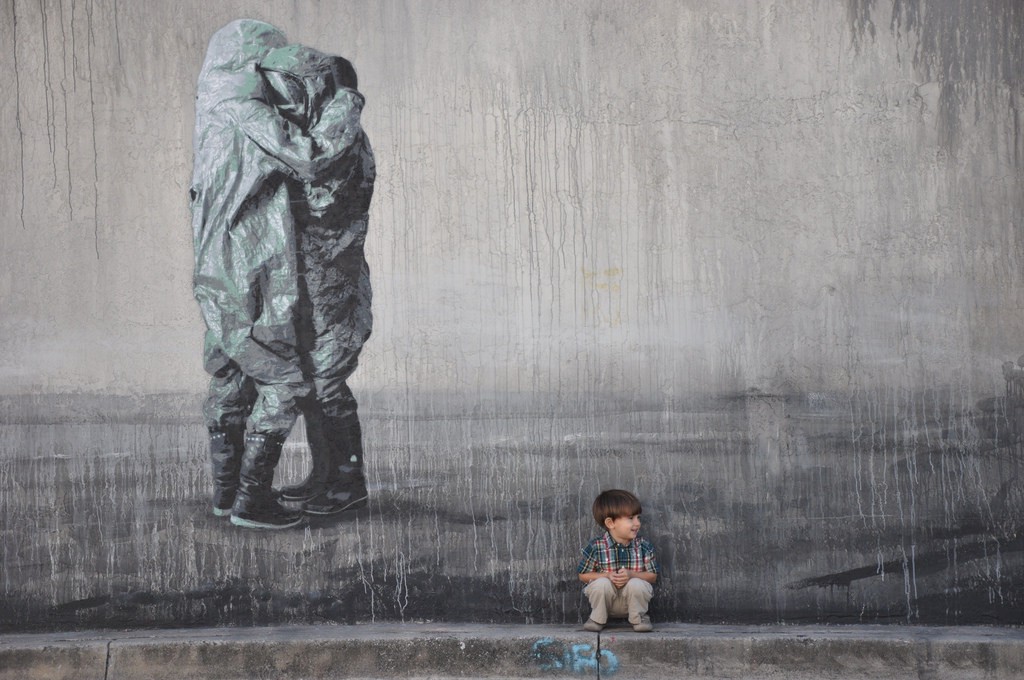
It’s real bad out there. Not outside, where it’s actually quite pleasant except for the pollen, but like out in the world where people wear suits and all the politics happens. It feels like civilization is in kind of a major backslide? The New York Times is suggesting you do a handstand to feel better, so you know something is up. I am not suggesting any of the below music as a distraction, but rather a lily pad of a palliative until you can get to a bar or a gym or a park. They will make being online this afternoon just that much more bearable. Because it’s going to be bad.
Balk already gave you this new Waxahatchee song, but I’ll put it here because it’s worth playing on repeat:
Glitter-covered pop-punk band PWR BTTM’s sophomore record, Pageant, is streaming in full over at NPR, and boy is it good. It’s also only thirty-three minutes!
First Listen: PWR BTTM, ‘Pageant’
Taylor Swift “broke” her “media silence” to post in support of HAIM’s new song, “Want You Back,” a teaser for the new album coming in July:
If you’re more of a pedal steel person (I’m a slide guitar woman, so, close) here’s this from Steelism:
One of the boys from the divorced boy band has a solo song:
I guess if you care about LCD Soundsystem there’s even this, too, coming at midnight.
Prepare Your Bodies, LCD Soundsystem Will Release Two New Songs At Midnight
Anyway yeah it looks like House Republicans are going to biopsy the hell out of the American healthcare system, so find something to listen to that isn’t Wagner while the votes get counted.
Waxahatchee, "No Curse"
This is good. So there’s that.
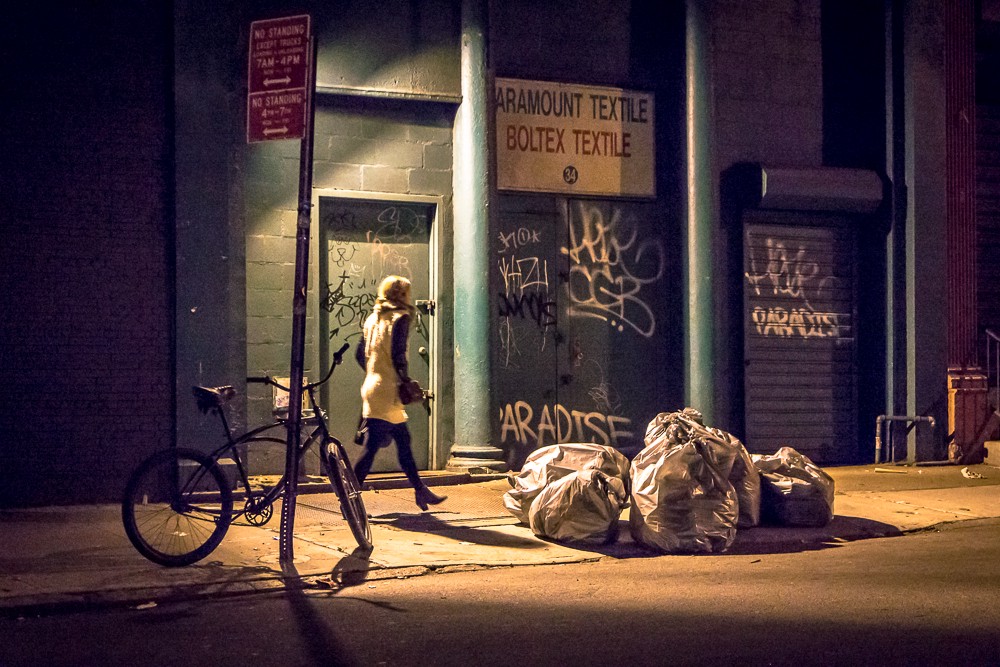
There is a new Waxahatchee record out in a couple of months and it is so good — Katie Crutchfield is just locked in at this point — that it doesn’t even need to include this song, which is also great. Watch the whole thing being made here. And do enjoy.
New York City, May 2, 2017

★★★★ A line of dark clouds came glowering in from the west, wetted down everything, then swiftly went away. With the hour the pavement was drying under full sun. Clouds bridged the gaps between facing cornices. A convertible BMW came around the corner, top down. There could have been a spare hour for walking home in, but the abundance felt as if it would go on forever, and the moment was lost. A treetop on Sixth Avenue was a solid balloon-like volume, filled by the breeze. The late sun made the winter’s dirt on the outside of the windows opaque white and brought out every particle of dust stuck to the computer screen. At night, the wind beat at the glass with a sound like heavy, driving rain.
Brads Pitt, In Order
A Listicle Without Commentary
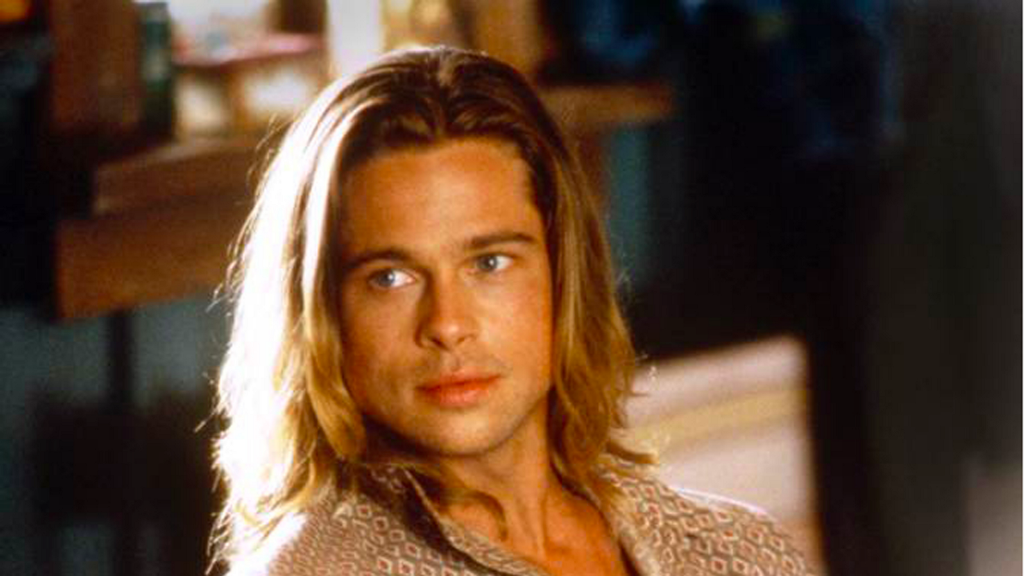
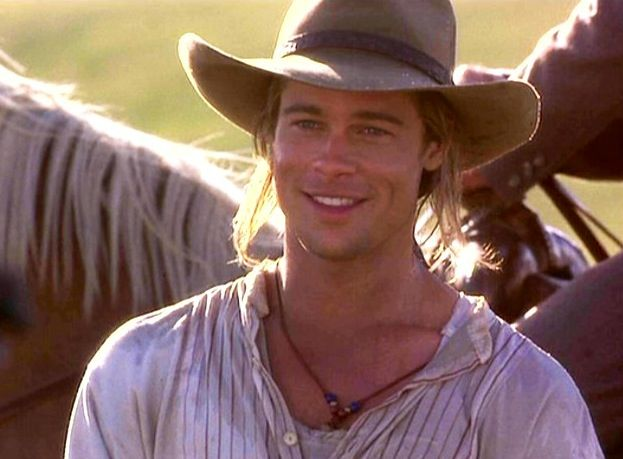
27. The Curious Case of Benjamin Button Brad
26. By The Sea Brad
24. Inglourious Basterds Brad
23. Mr. & Mrs. Smith Brad
22. Seven Years in Tibet Brad
21. Moneyball Brad
20. Tree of Life Brad
19. The Big Short Brad
18. 12 Monkeys Brad
17. Sleepers Brad
16. World War Z Brad
15. Se7en Brad
14. The Mexican Brad
13. The Assassination of Jesse James by the Coward Robert Ford Brad
12. Spy Game Brad
11. Meet Joe Black Brad
10. Burn After Reading Brad
9. Interview With A Vampire Brad
8. Snatch Brad
7. Fight Club Brad
6. Babel Brad
5. A River Runs Through It Brad
4. Troy Brad
3. Ocean’s Eleven Brad
2. Thelma & Louise Brad
1. Legends Of The Fall Brad
This Maniac Stork Won't Stop Terrorizing a Tiny German Village
Deutschland über us.
Germany’s headlines are going cuckoo for Ronny the Stork.

Every news outlet in the Federal Republic is hot on the biggest scoop of the season: Ronny, a ginormous fowl with an apparent vendetta, has alighted upon the tiny village of Glambeck — not with a newborn baby in tow, but rather bearing a violent grudge against car roofs and windows, which he wails on “as if possessed.” No shiny surface in the 130-person Dörfchen (DOEEEERF-schen; a very small village) is safe from the “Terror-Stork” and his Schnabel-Attacken (SHNAH-bull ah-TACK-uhn, or “beak attacks”).
You must watch this video right now. I’ll wait.
Gehen die Hackattacken wieder los?: Krawallstorch Ronny ist zurück in Glambeck
As the wall–to–wall coverage makes clear, this isn’t the first time the Problemstorch (pro-BLAYM-storsh) has wrought hack-attack havoc in this particular hamlet. “The village tyrant is back!” alerts Hannover’s local; “Not him again,” begins the German wire service story that’s stoked what appears to be a nationwide Ronny Fever.
Well, according to a hard-hitting report on Germany’s answer to CNN, N-TV, Ronny’s unrelenting onslaught of Schnabel-based automotive murder is an unfortunate case of mistaken identity. After his First Beak Contact last summer, conservationists attributed Glambeck’s unprecedented rise in stork-on-reflective-inanimate-object crime to “exaggerated courtship behavior”: Ronny had been incensed that another pair of storks had settled in the village and built a nest. So, first he attacked the happy couple’s home, which was atop the village church’s chimney (of course it was). Then, later, when he looked at windowpanes or shiny black-painted cars, he saw his reflection — and obviously mistook it for a competitor. Now he’s back, and he’s still pissed.
Just as this isn’t Ronny’s first time at the Hackattacken rodeo, it’s also not the first time in recent years an animal’s unusual behavior has captured the hearts of a people who normally fortify that organ against capture with tight shirts and pedantry. Who can forget Knut (RIP), the polar bear cub abandoned by his mother but adopted en masse by the entire city of Berlin? And then of course there was Paul (also RIP), the clairvoyant octopus who could predict the winners of sporting events.

For as much as Germans regard other humanoids with skepticism (on a good day), they love the shit out of their animals. The term for loving animals is, in fact, to have ein Herz für Tiere (ayn HAIRts fooooooer TEE-ruh), or “a heart for animals,” something I learned the hard way on a visit to Berlin in 2005, when the underground public transport stations of the world were at Peak Charity-Mugger, in the days before omnipresent phone-gazing and earbuds mercifully eroded that particular epidemic.
I lived in New York at the time, where I couldn’t swing a half-dead rat in the vicinity of a subway station without some perky twentysomething blonde up in my face asking me if I had Time For The Children. I’d fled to Berlin for a month to re-learn the language of German (I’d just been accepted into a PhD program in German Studies, and they were under the impression that I spoke it), and also to get away from the guy who’d just dumped me and the city that reminded me of that fact, only to alight at the U-Bahn station of the Ku’Damm — the Times Square of Berlin, which was at the time home to the city’s biggest and best internet café — and have some perky twentysomething Aryan up in my grill asking me if I had ein Herz für Tiere.
When I told him nein, meaning Nein, I do not have time or desire to give my credit card number to a fake charity on the street, he started. “You don’t have a heart for animals?” he asked, on the verge of tears. You ever have one of those situations where you accidentally say the wrong thing but it would be so time-consuming to correct it — especially when your ultimate goal of being left the hell alone is in peril? Obviously, I had no choice but to stick with my lie. “Yes,” I said. “I hate animals.” Everyone around me gasped, and a few even followed me onto the U-Bahn platform just so that they could look at me with mild disapproval.
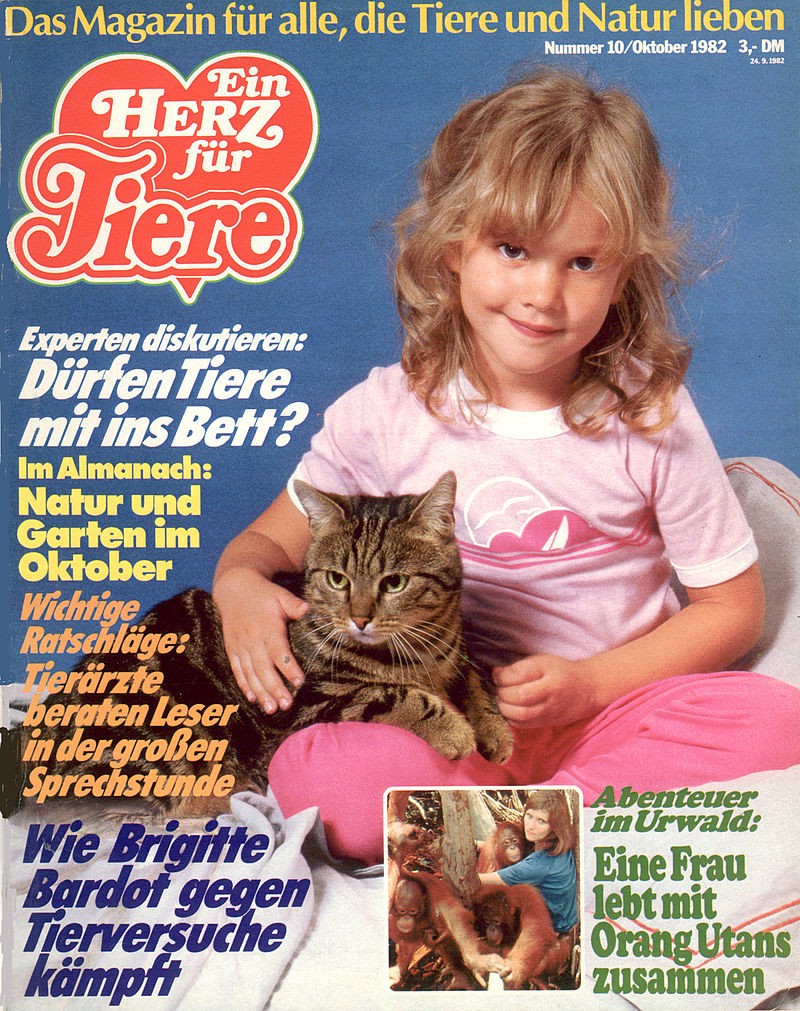
Even though Germans enjoy eating all manner of animals — some of which are barely even dead — to say that you don’t love animals to a German is akin to saying you don’t love white asparagus, or that you don’t care about the difference between Saxony and Lower Saxony (whoops). Germans love animals so much that the Berlin police recently held the German public rapt as they spent a night in a daring rescue of a hamster named Sir Henry.
And although Germans have a heart for all manner of fauna, they grant the canine genre an especially lofty status. Although dogs are also omnipresent Stateside, they are generally relegated to our private residences, wide open spaces and select “dog parks,” which is American English for feces sculpture gardens.
Americans will often try to skirt the general Hundeverbot (HOON-duh-fer-BOAT) in public accommodations by claiming their yappy little nightmares are “therapy dogs” (I see you, obnoxious yentas in that one café upstate last summer — what was that Cujo “therapy” for, restaurants that are insufficiently terrorized?). Germans and Austrians don’t have to do this (they wouldn’t anyway; it’s against the rules), because dogs are welcome in all manner of public place so long as they are wearing a leash and muzzle, or, as Germans call it, a Beißkorb (BYE-skorb, literally a “bite cone”).
Thanks, then, to Germans’ incorrigible Heart for Animals, the good old ’Murcan remedy for Ronny the Problem Stork (HINT: I MEAN SHOOTING HIM) is not an option. He’s just going to keep challenging his reflection to a duel, and the 130 poor souls in Glambeck are just going to have to keep hanging sheets over their windows and moving their cars. Eventually, like all other affectionately named and unofficially adopted German wildlife, Ronny will someday hack-attack off this mortal coil, hopefully after a long and happy life of beating the everloving shit out everything shiny. Until then, the Germans will count the days until the end of August, when Ronny migrates to the south and becomes somebody else’s Problemstorch.
Book of Texts
Notes on life
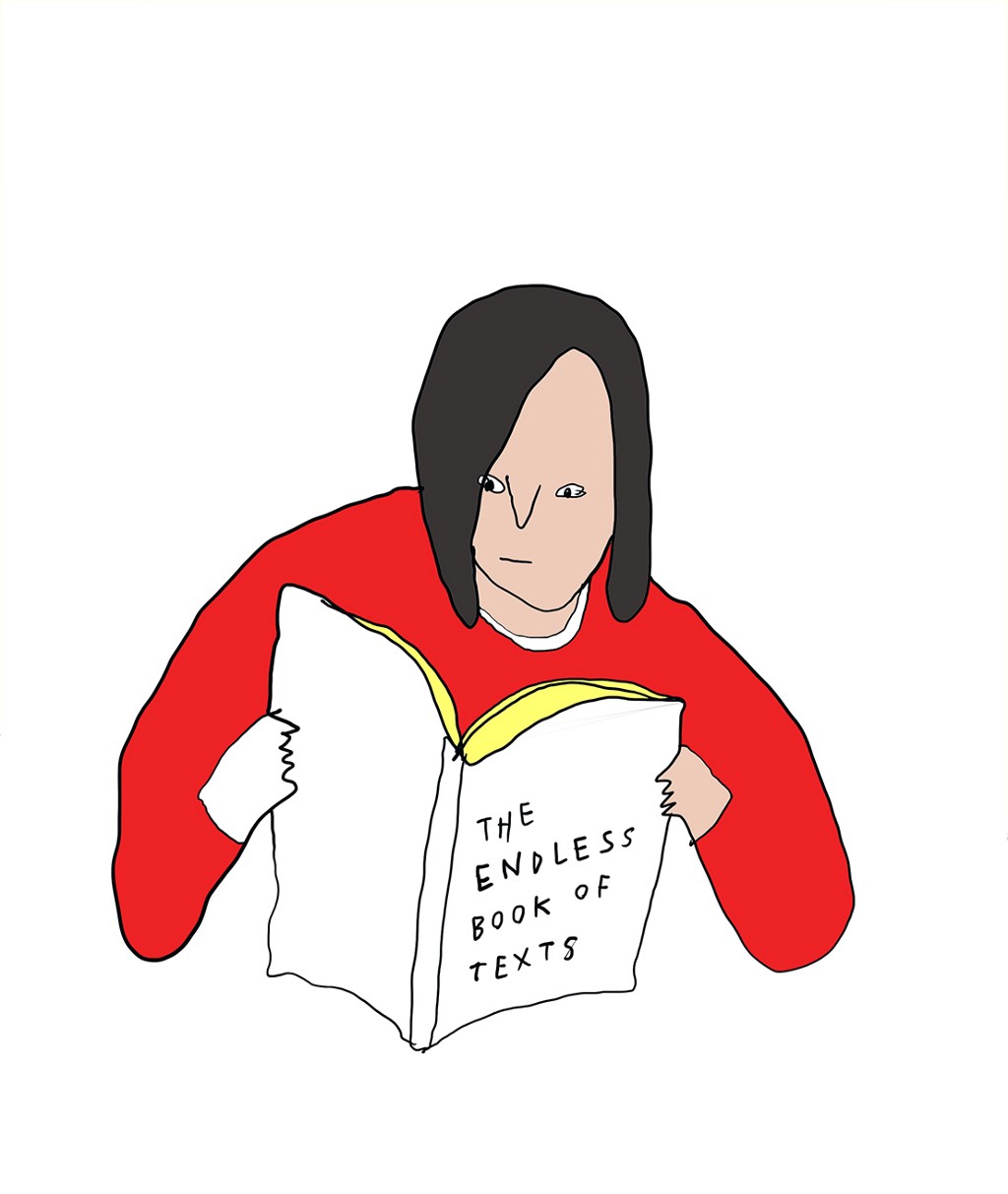
Liana Finck’s cartoons appear in The New Yorker and on Catapult. She posts her drawings on Instagram.
Did You Know That GQ Style Was A Separate Magazine?
It’s four issues for $50.
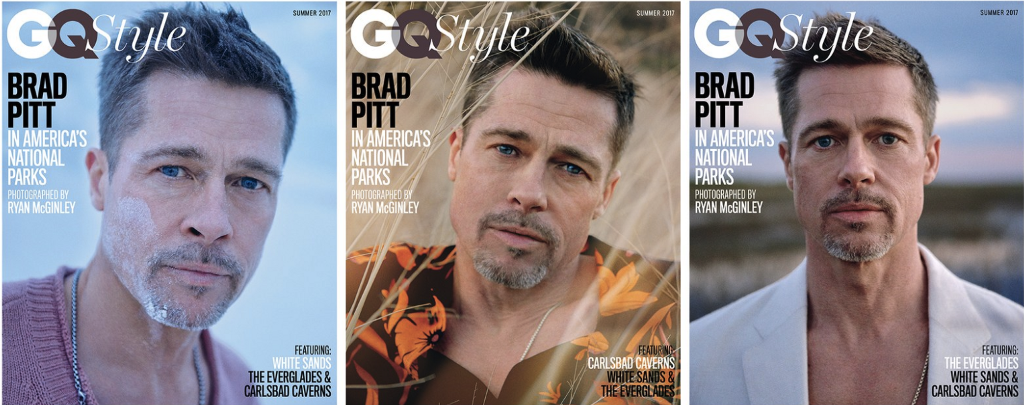
Everyone’s sharing pictures of gaunt fashion Brad Pitt rolling around in White Sands and the Florida Everglades (harder to roll around in stalactites but he went to Carlsbad, too) this morning, and I just wanted to point out that GQ Style, the confusing quarterly sibling of GQ that was suddenly revamped right after Details shuttered, presumably to hold onto those sweet sweet advertising dollars:
With the closure of Details last month, we learned that GQ Style, an offshoot of the Condé Nast menswear title, would be increasing its publication from a biannual schedule to a quarterly one and launching its own website.
Anyway it’s now a whole thing of its own—think of it as a slim-fit GQ. Here’s an interview with Editor-in-Chief Will Welch, which sort of explains it:
5 Questions for Will Welch, GQ Style’s New Editor-in-Chief
Does it matter that this is where they filed the Ryan McGinley photoshoot plus interview transcript with Brad Pitt? Not really. Very smart though! Brad looks like he’s on the Angelina diet. The interview is sort of wandering and hard to follow and has that paradoxical empty-calorie feeling of seeming like Pitt is sharing a lot but also nothing at all, and that he’s either really “digging deep” as GQ style’s Twitter will have you believe, or that he’s just in a sort of proto-Val Kilmer phase, sculpture and all.
Brad Pitt Talks Divorce, Quitting Drinking, and Becoming a Better Man
Heaven, "Lonesome Town"
Every town is a lonesome town.

I guess we know what Chromatics’ Johnny Jewel has been up to instead of finally getting the new Chromatics album — one that was beaten to existence by the Second Avenue subway — ready: producing new band Heaven. Here they are with a cover of the Ricky Nelson oldie “Lonesome Town.” Enjoy. [Via]
